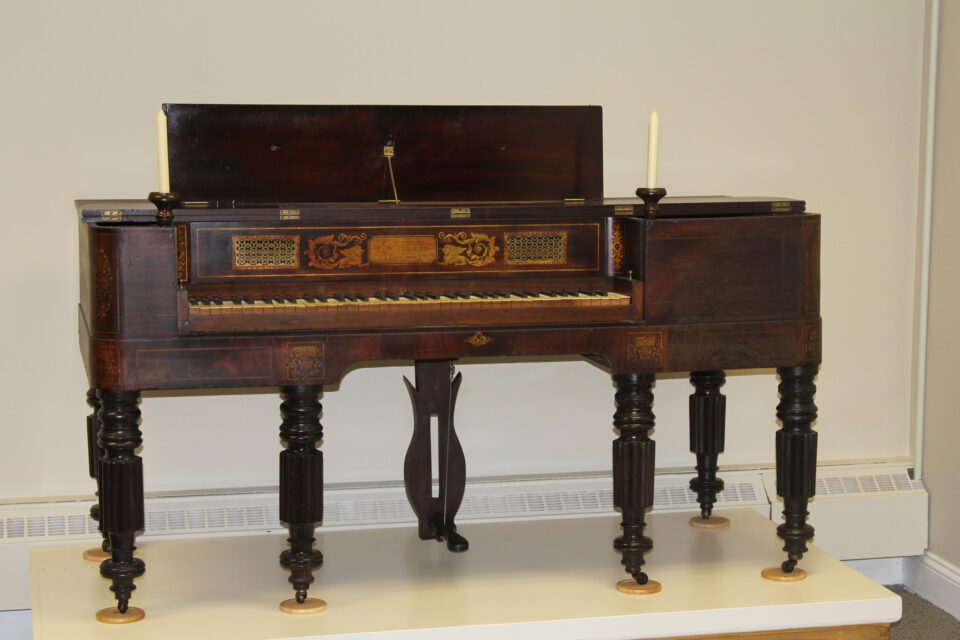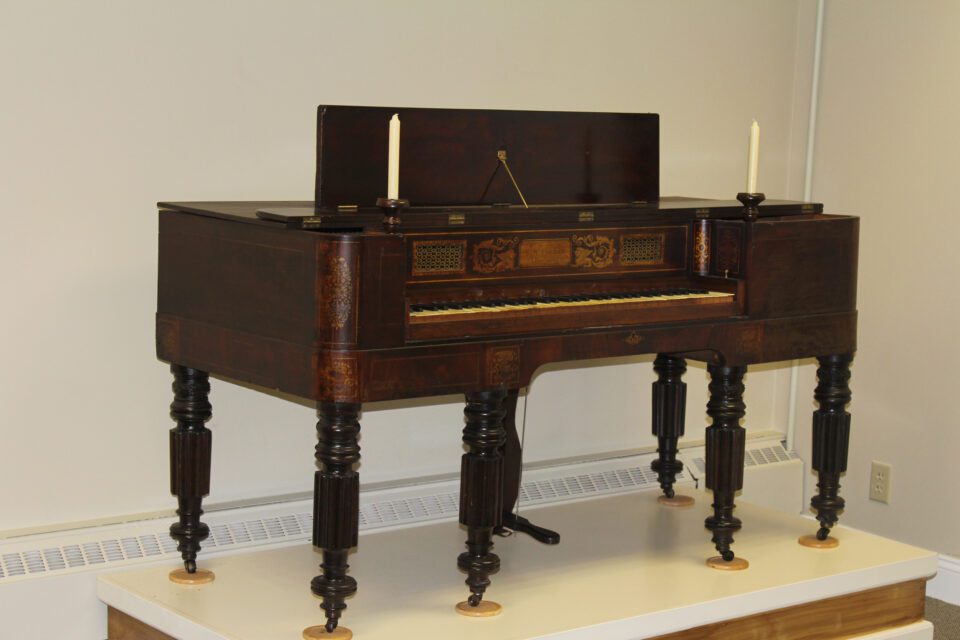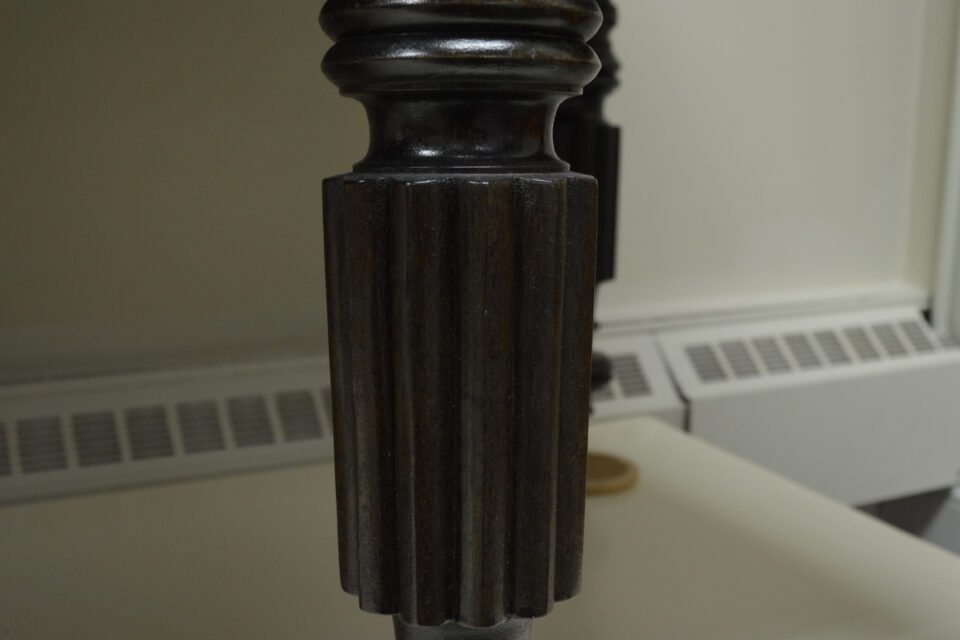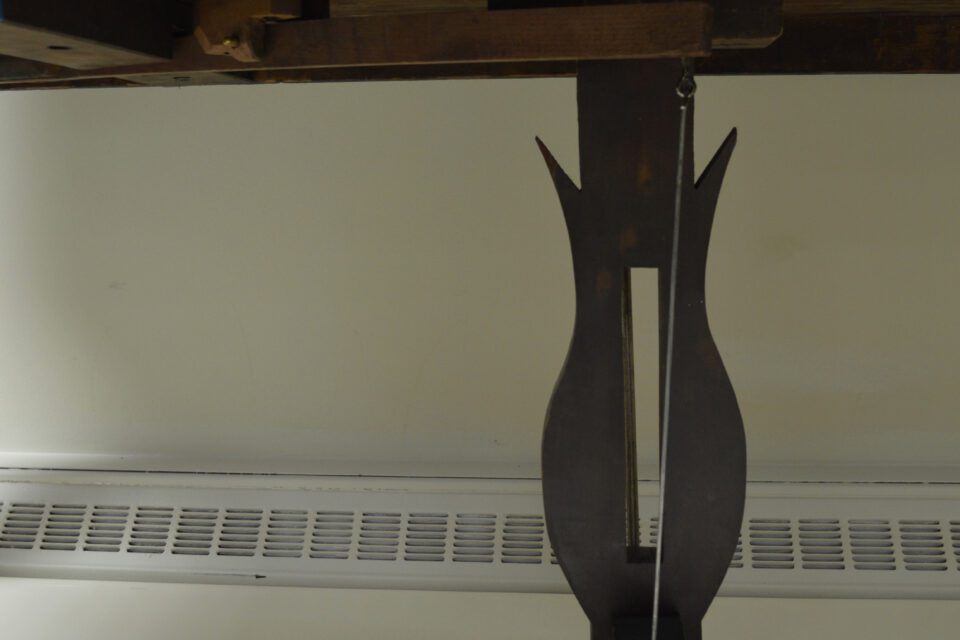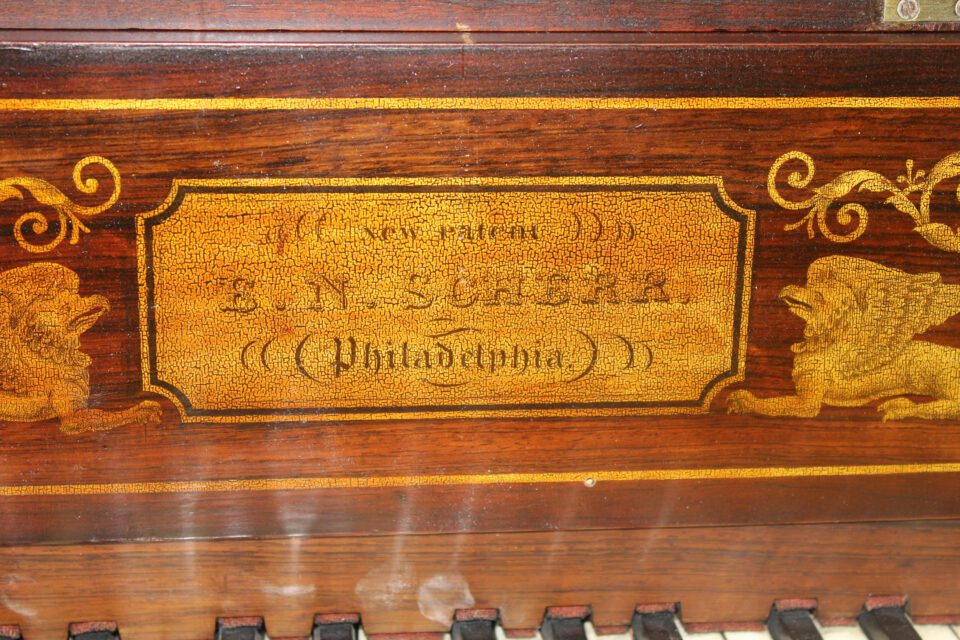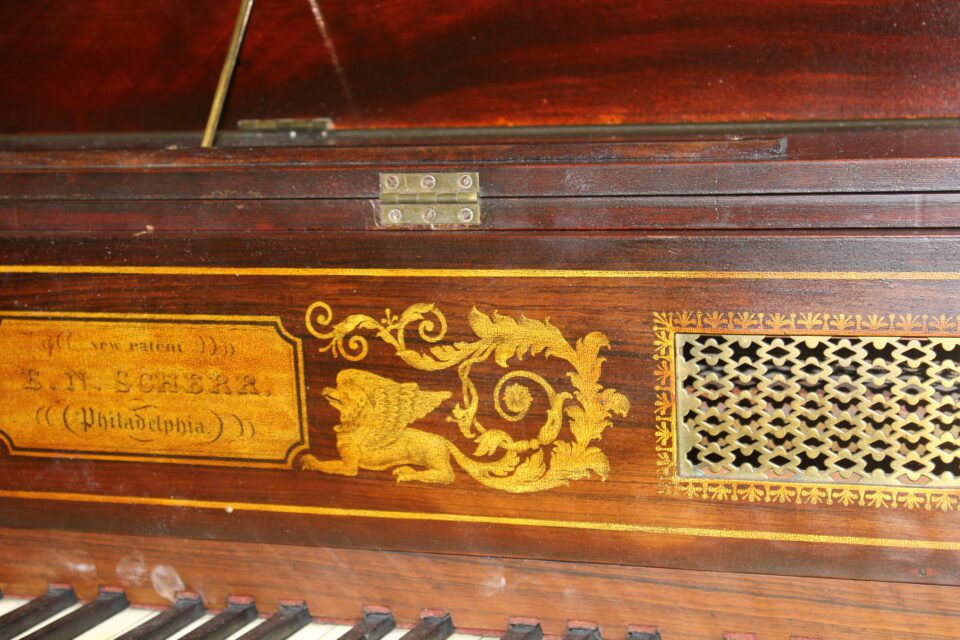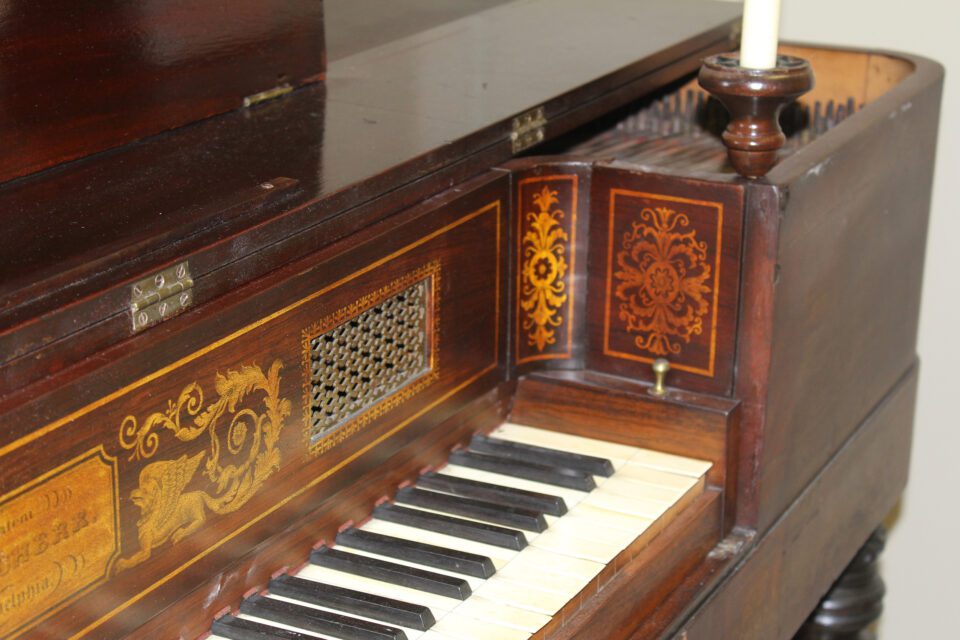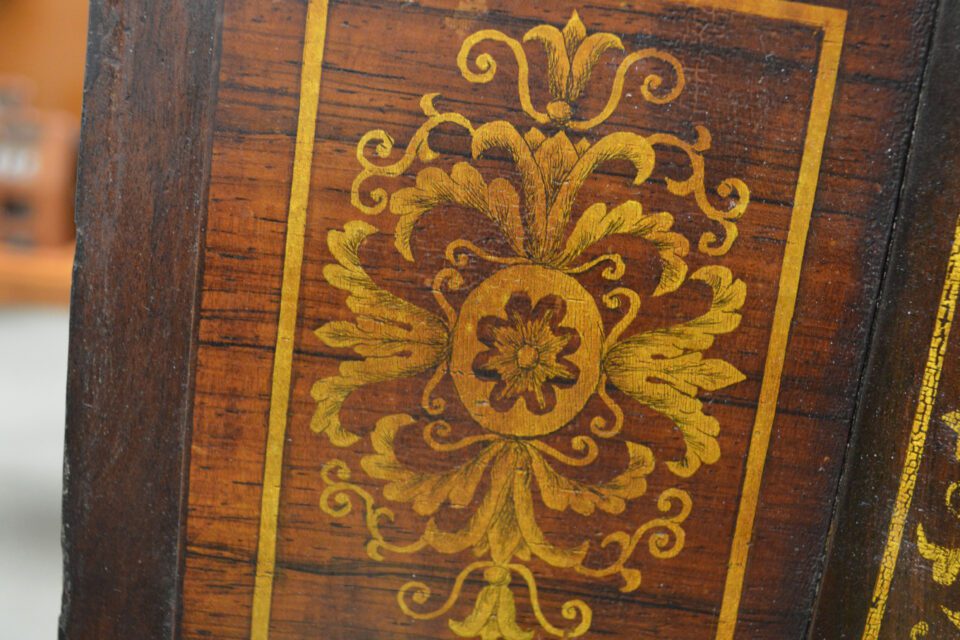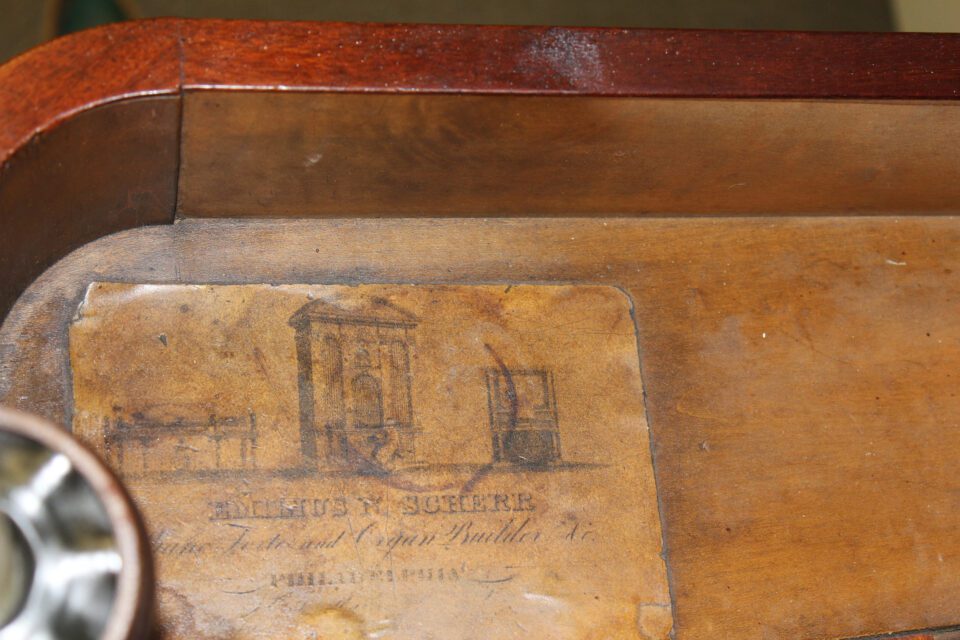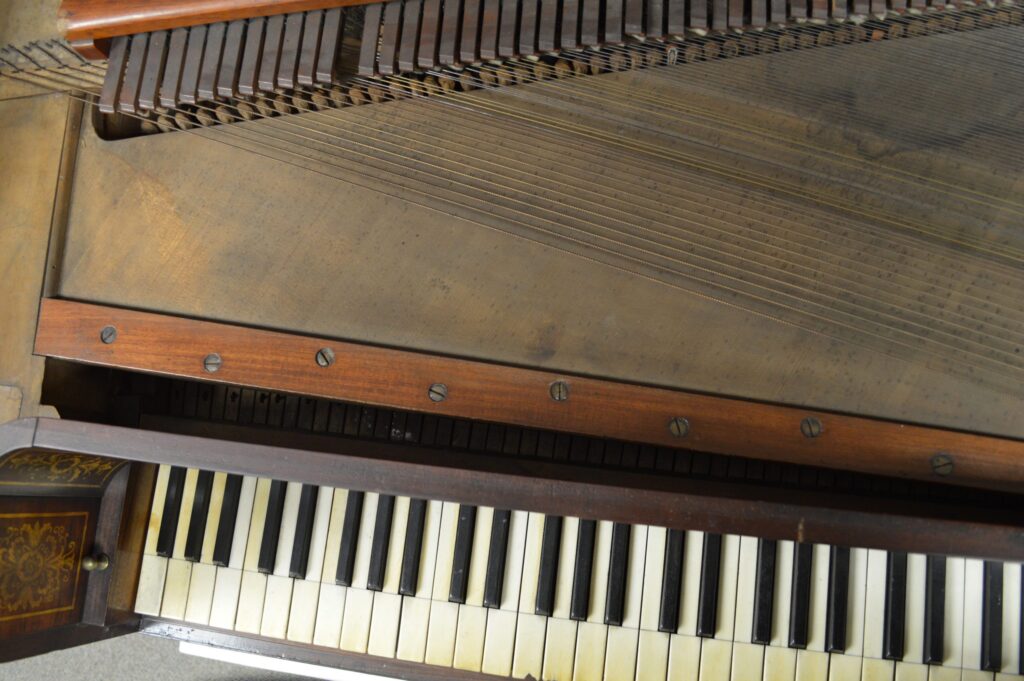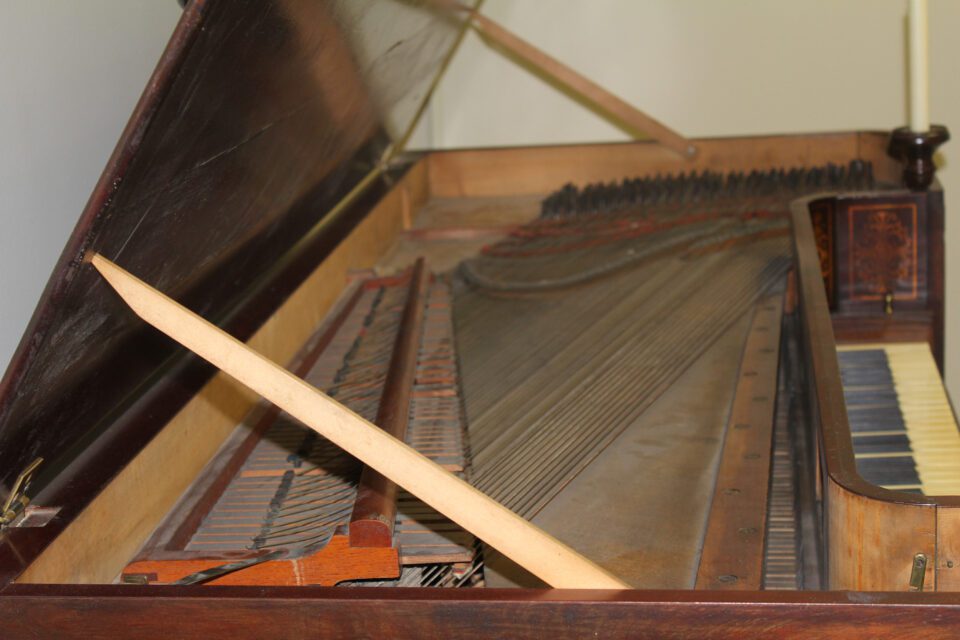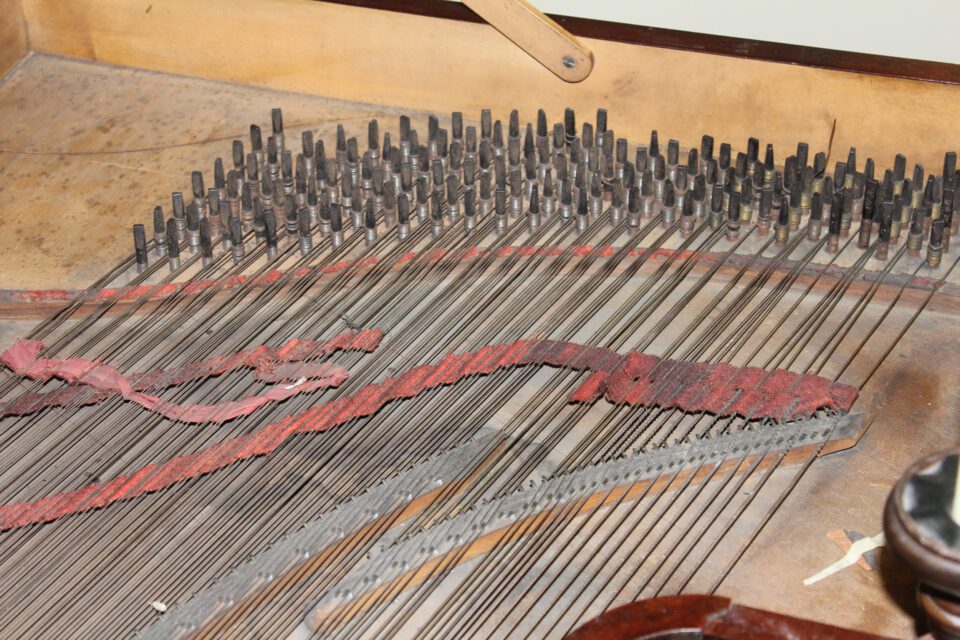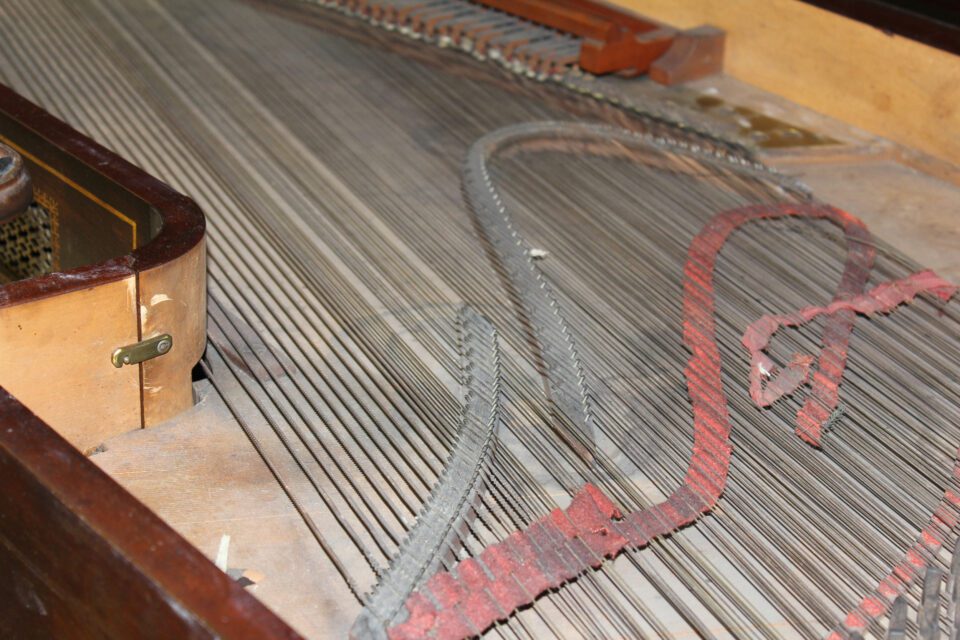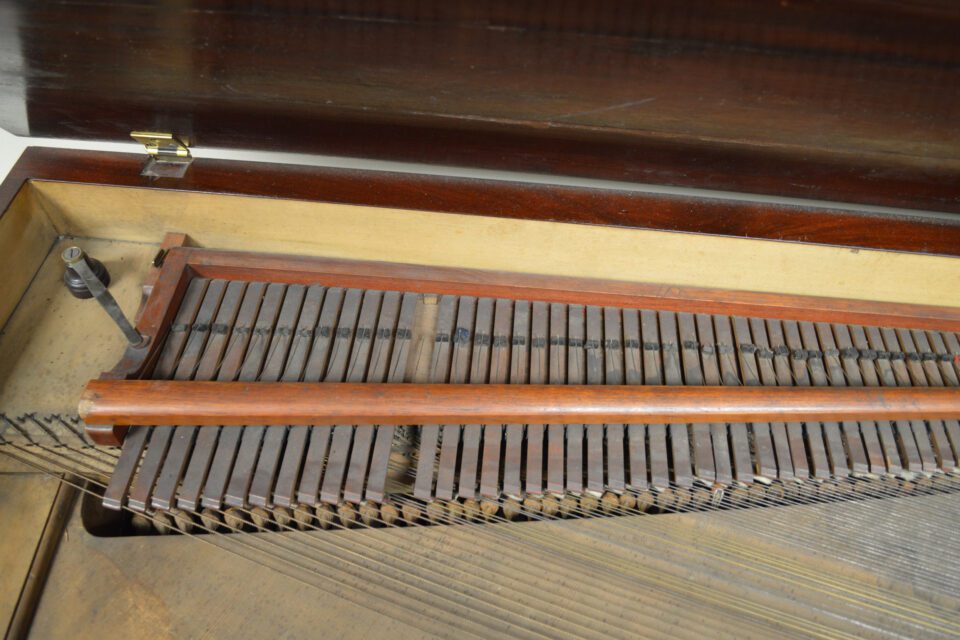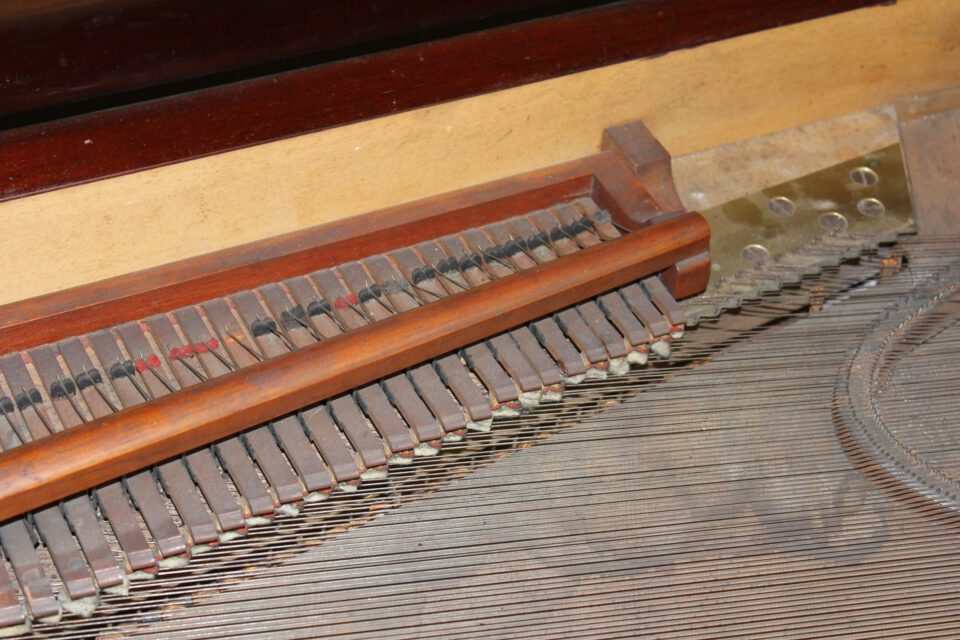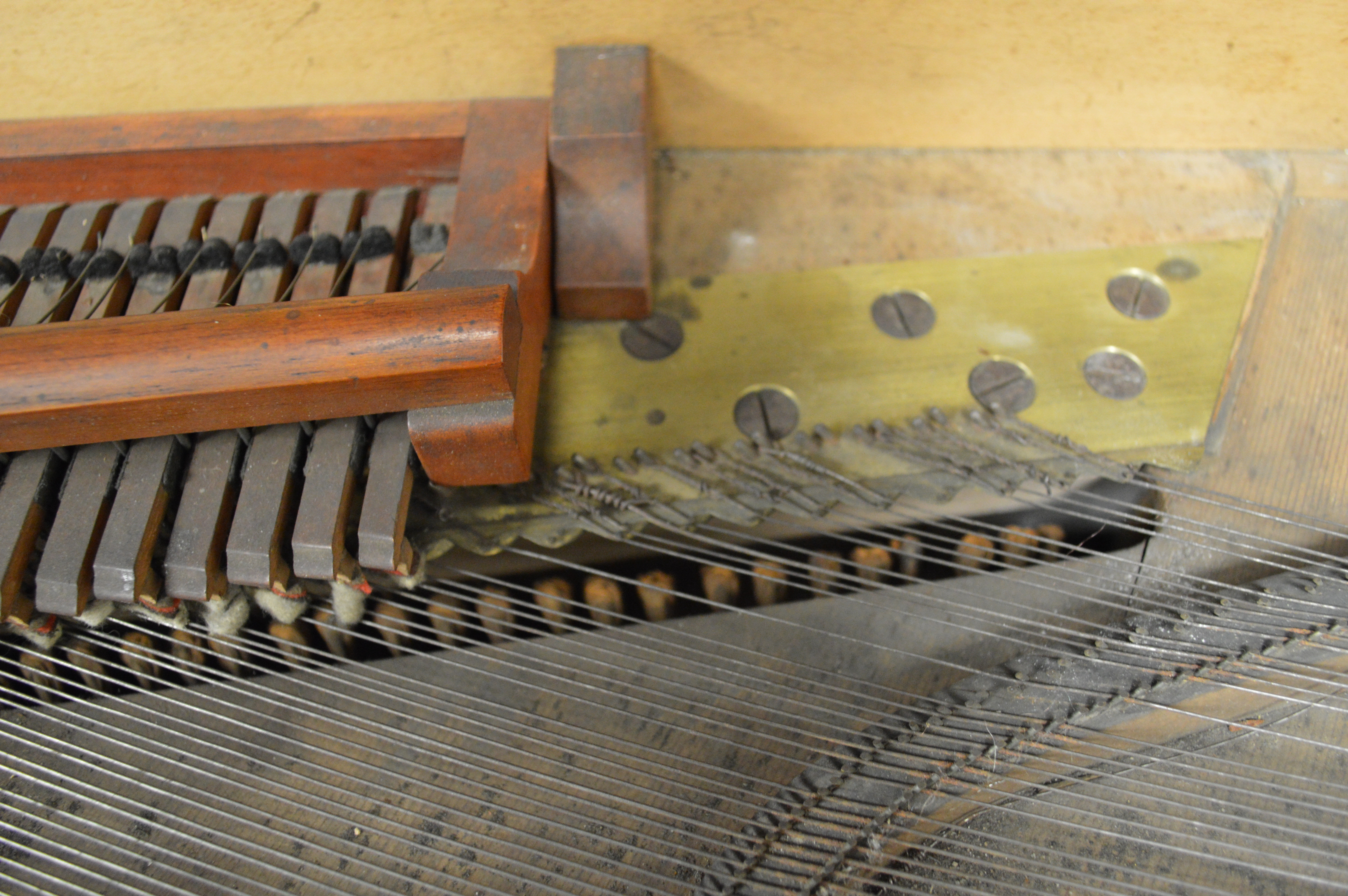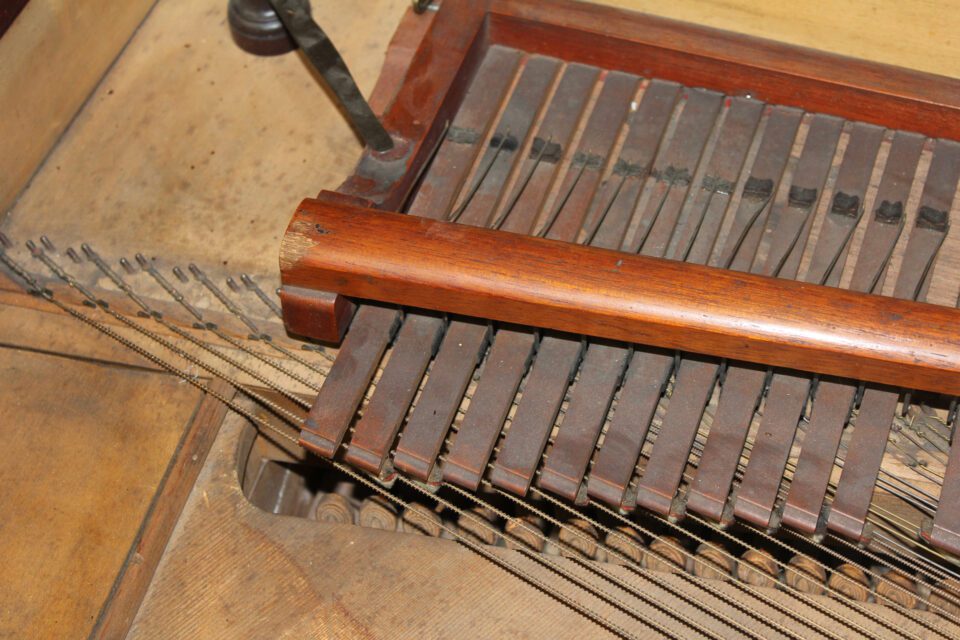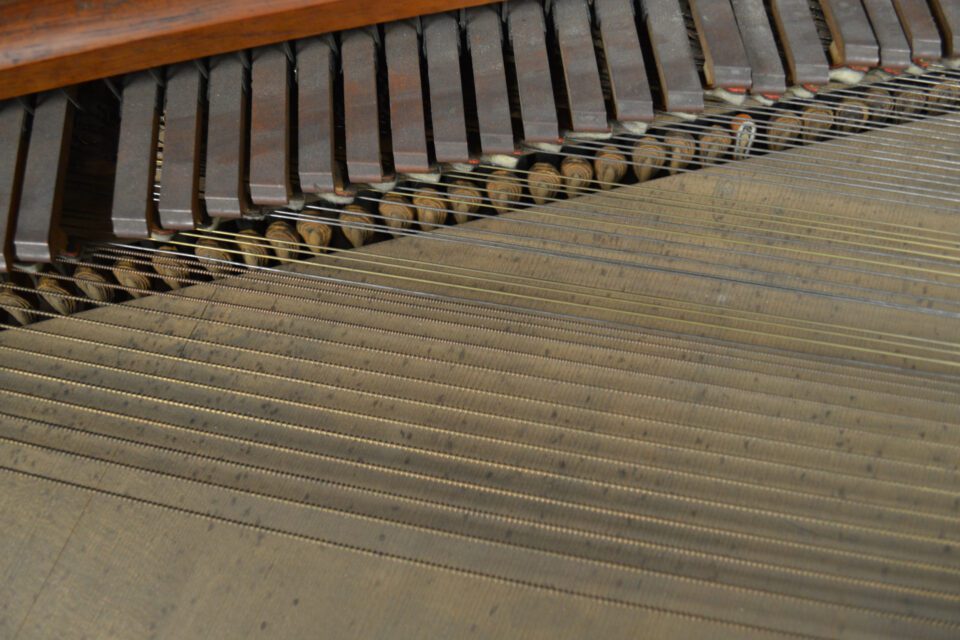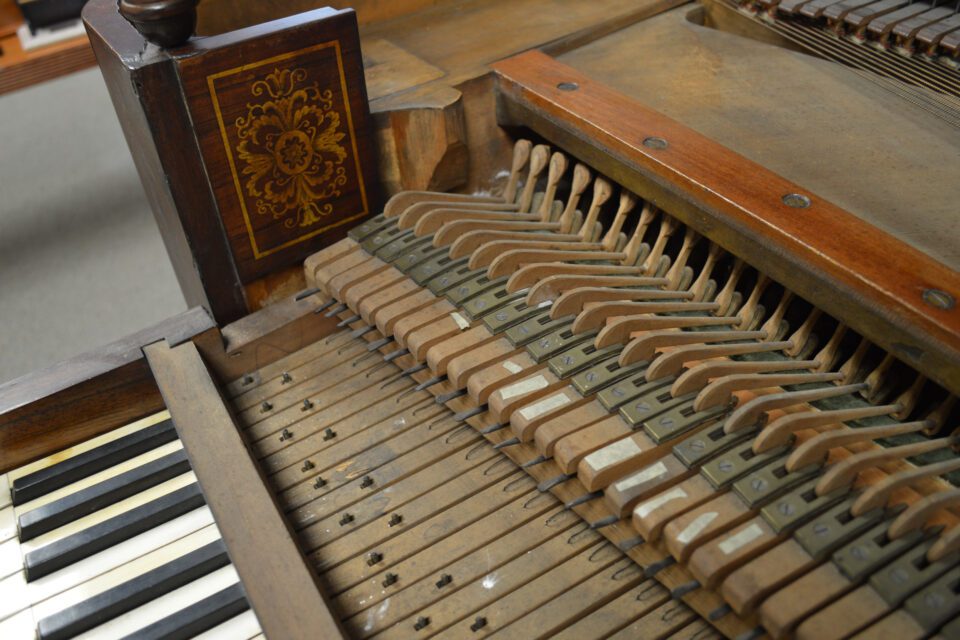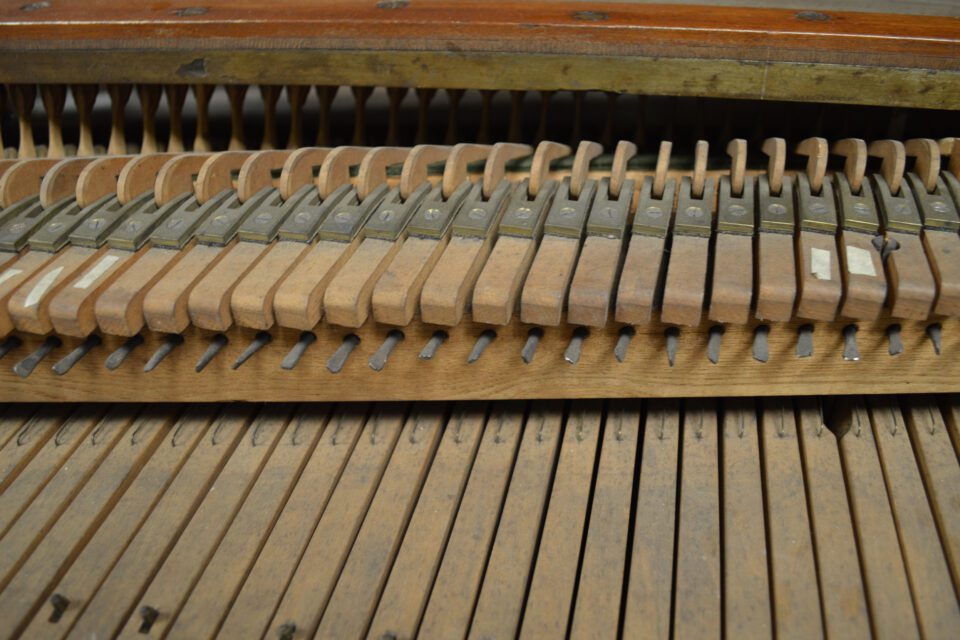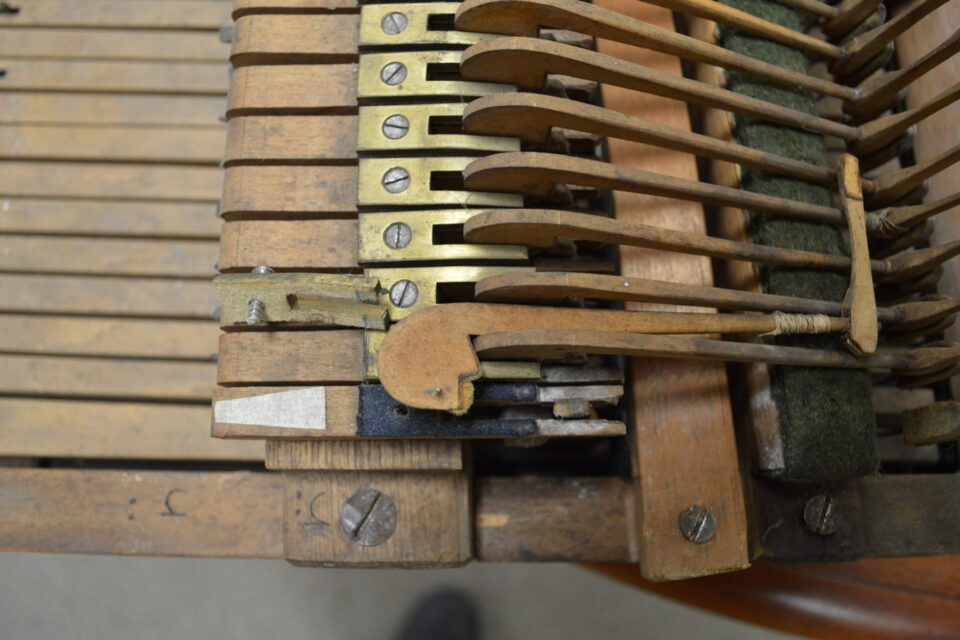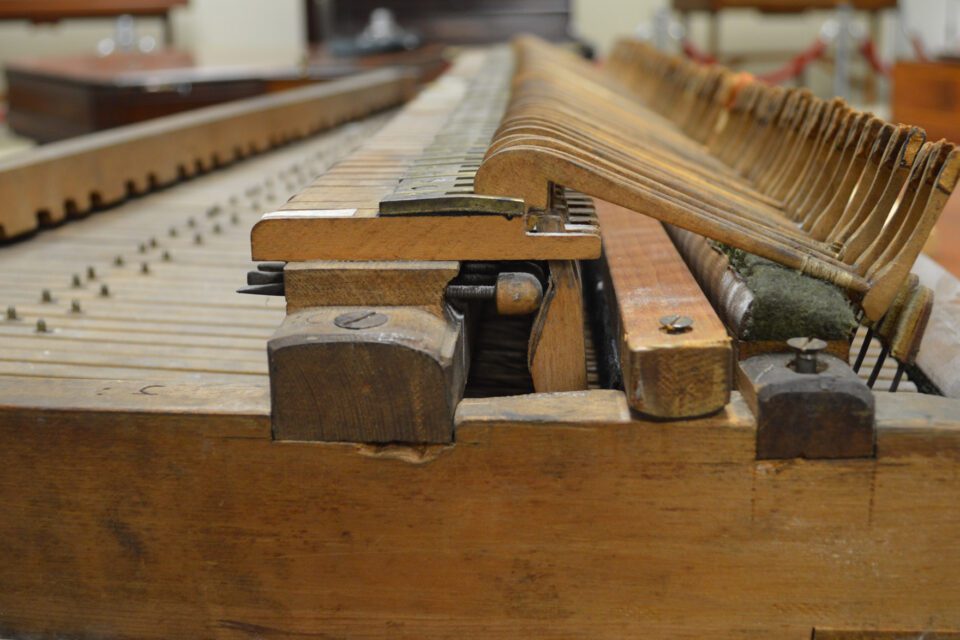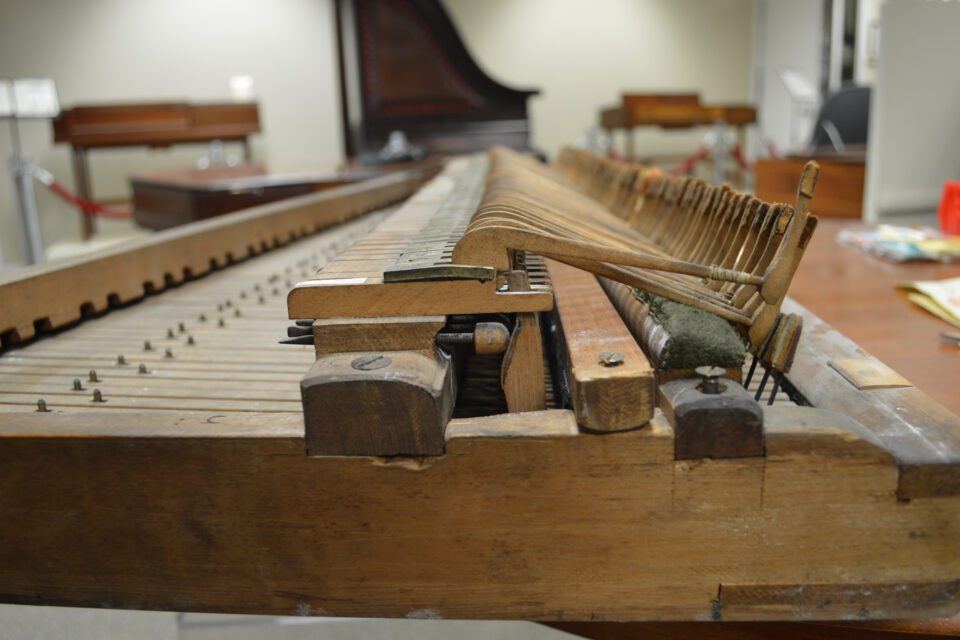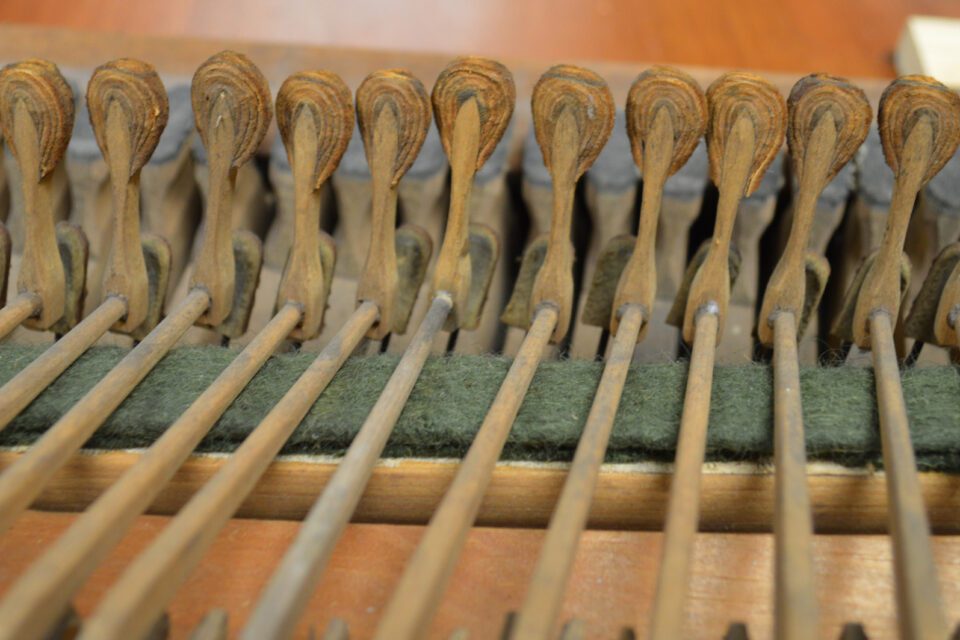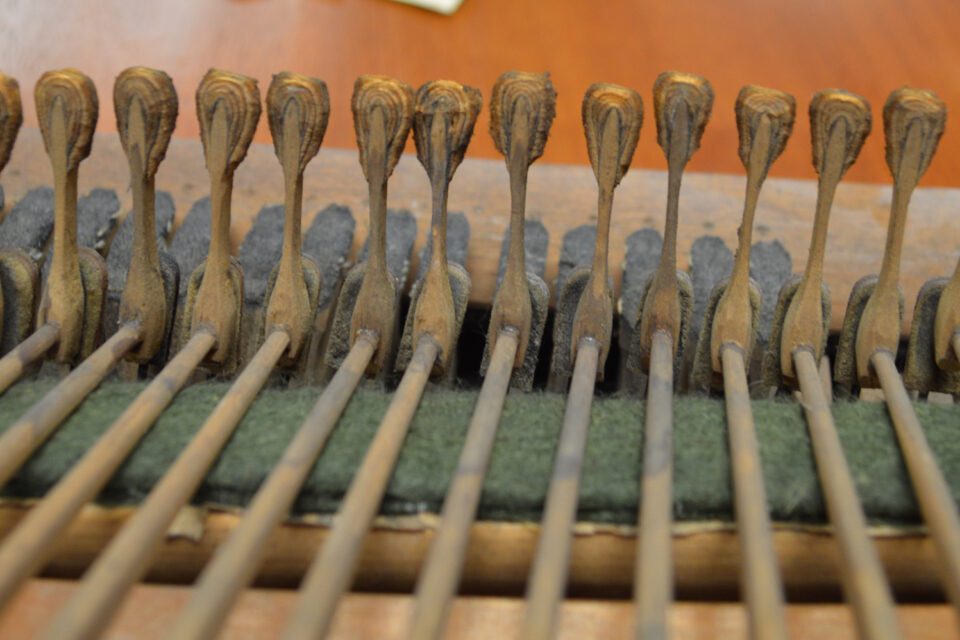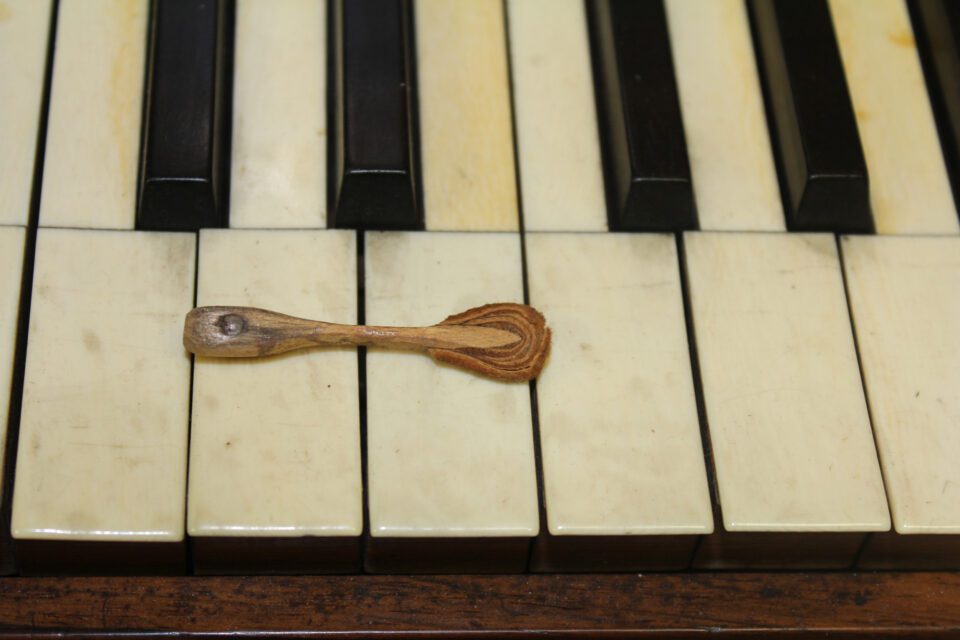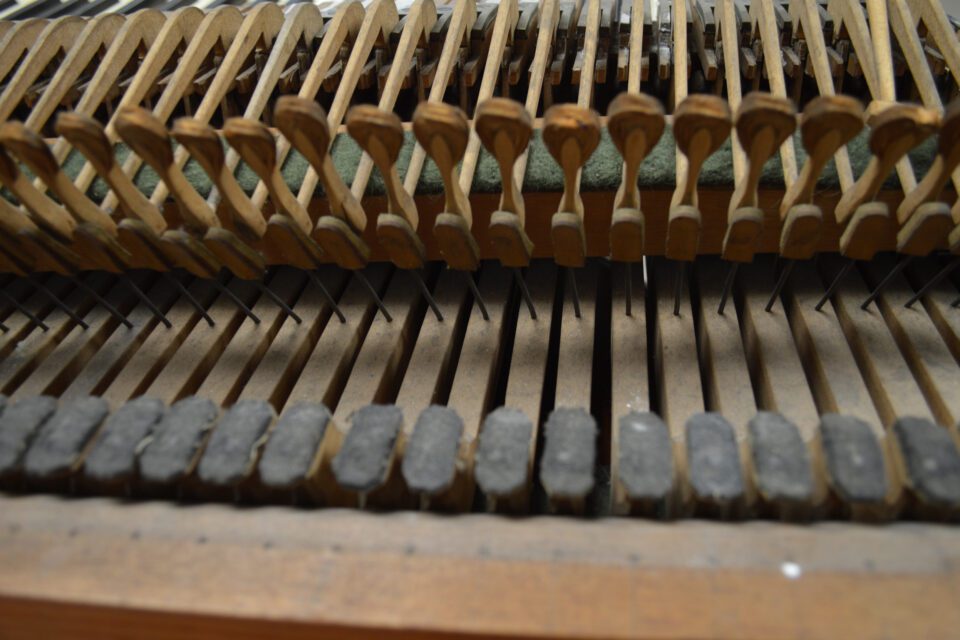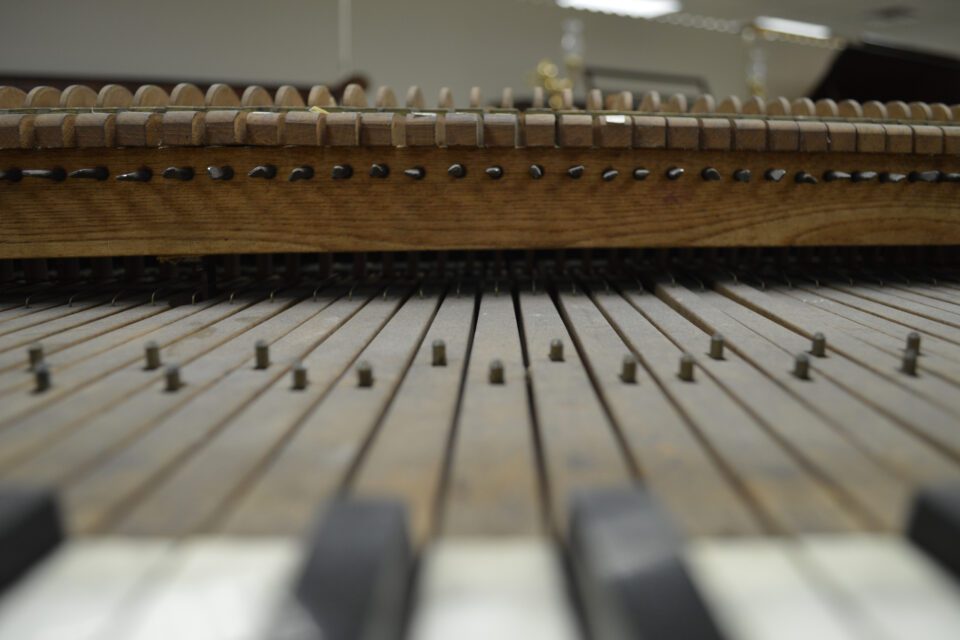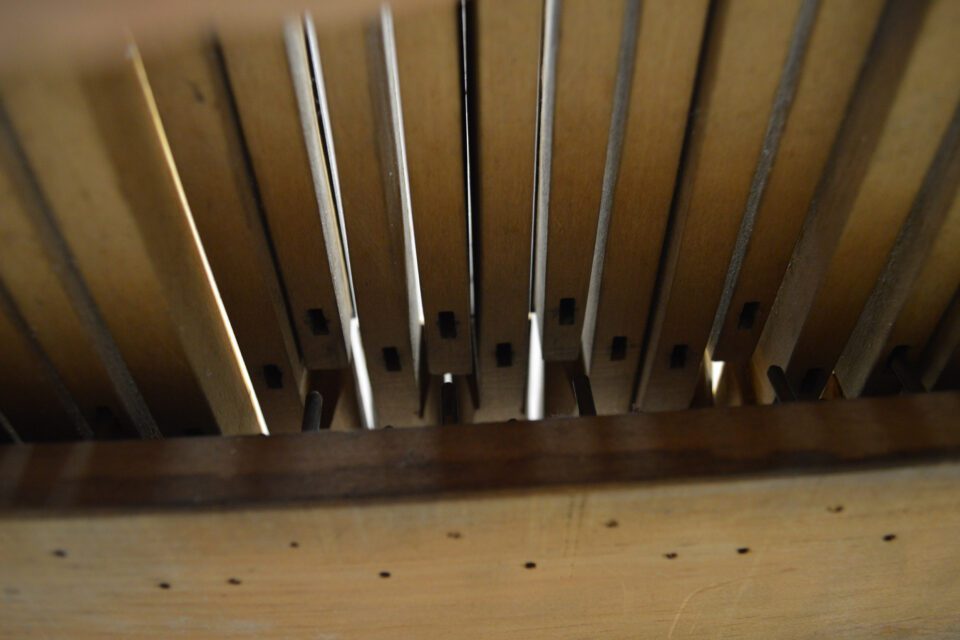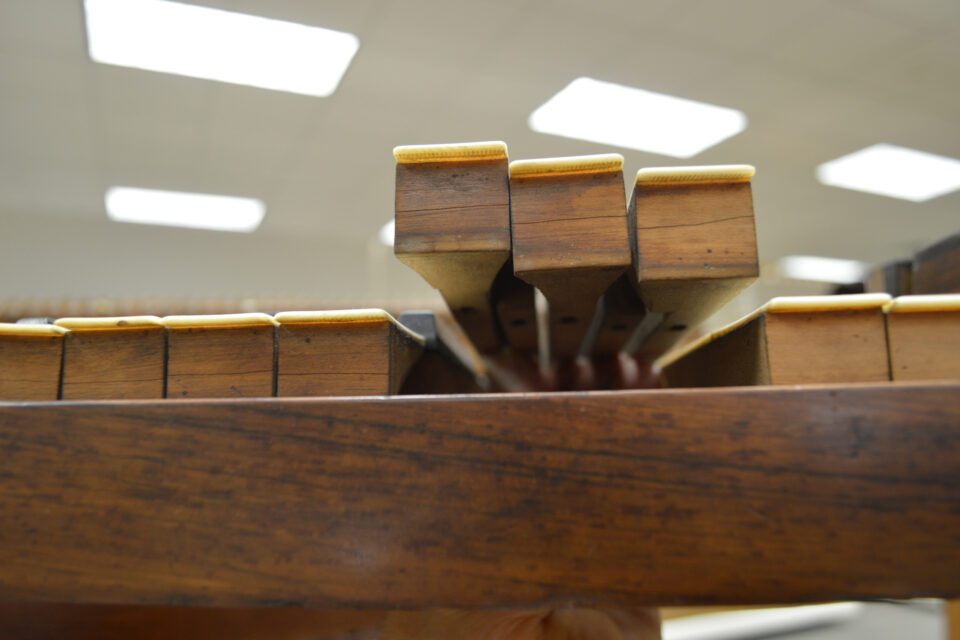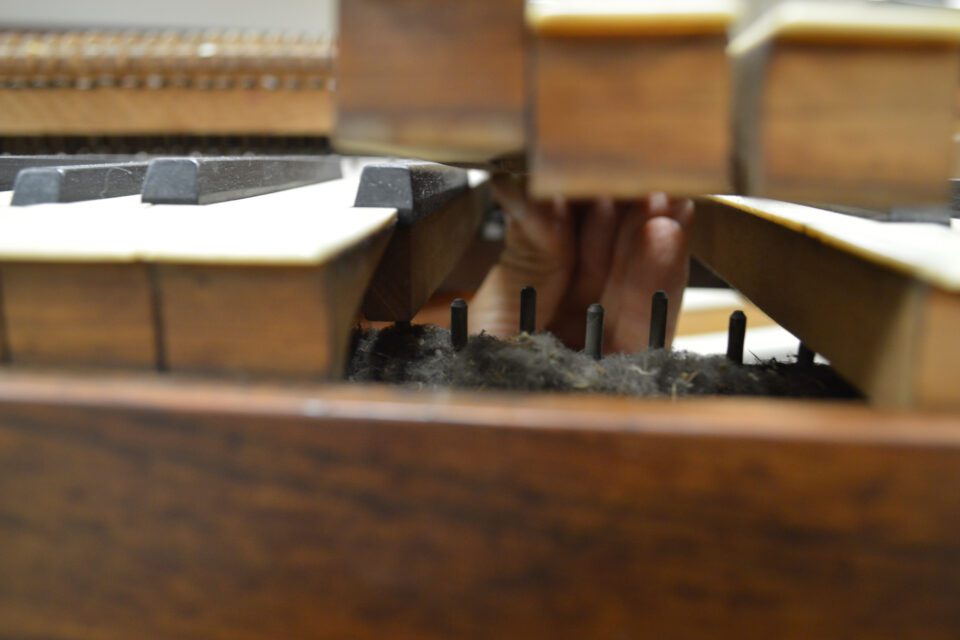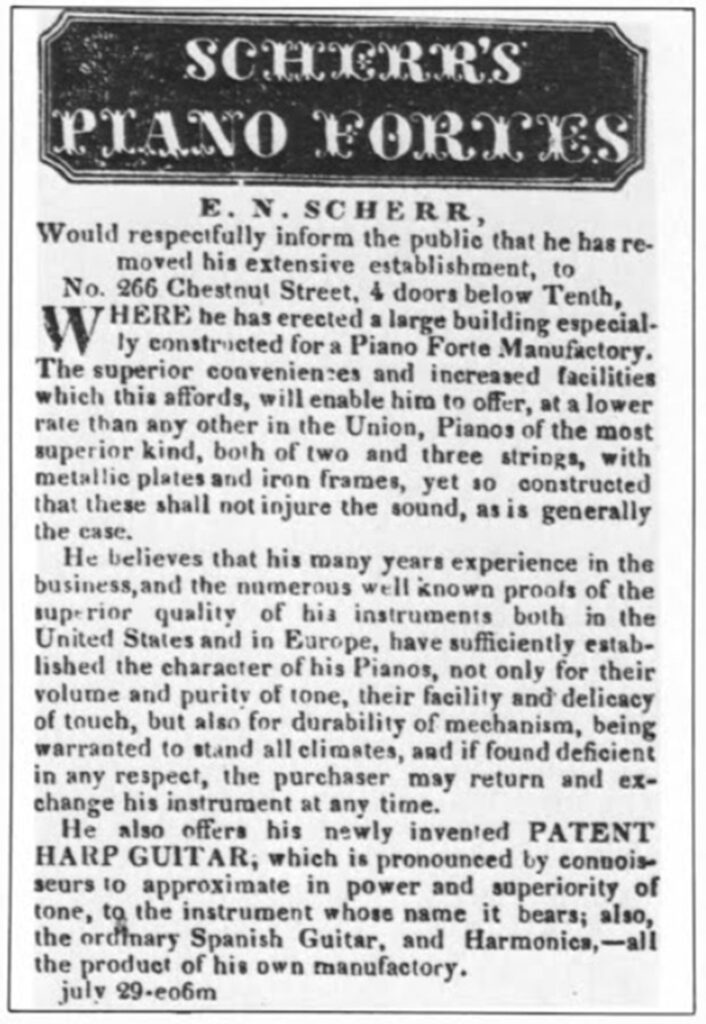Emilius Nicolai Scherr was born in Copenhagen in 1794, the son of piano and organ builder Johan Nicolai Scherr, and apprenticed there in A. Marschall’s piano and organ factory until 1819. He had further training with an organ maker in Linz before immigrating to Philadelphia in 1822.
Scherr built high quality pianos as well as other instruments, including guitars and organs, until his retirement in 1855. In later years, he adopted the modern innovations of his time, including the iron frame, as seen in the advertisement below, dated July 31, 1835. It is interesting to note that in 1833, Scherr contributed to a public dispute about the use of the iron plate, between Alphaeus Babcock (its inventor) and Thomas Loud. At that point, Scherr expressed his skepticism, writing, “With Mr. Loud I join in agreeing with a number of manufacturers in France, England and America, as to the badness of the plan of making piano frames of iron.”
In 1831 Scherr patented an unusual form of guitar he called the “harp guitar.” Its narrow, elongated tail rests on the floor, so the instrument would be held diagonally, rather like a cello. In 1841, Scherr reportedly provided a piano for the White House. He retired about 1855 and sold his business to Birgfeld & Ramm.
